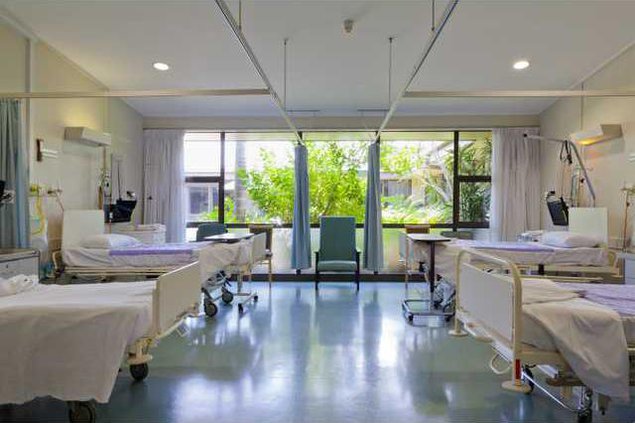Some new moms are coming home from the hospital with more than a baby. They're also bringing the placenta that nourished the child for nine months, planning to eat the organ like many animals do.
Proponents of placenta consumption say the practice gives a new mom energy, improves milk production and eases postpartum depression.
But the authors of a study published recently in the American Journal of Obstetrics and Gynecology found no evidence for those claims and warn that mothers who eat the placenta put themselves and their breastfed child at risk of infection.
The researchers want doctors to inform their patients of the risks of placenta eating — also known as placentophagy — and also to consider it as a possible cause if they encounter a new mom or baby suffering from a certain type of bacterial infection.
Here’s what’s behind the trend, and what parents should know before consuming a placenta capsule or smoothie.
Lotus births and placenta planting
Officially, the placenta is an organ, the only organ shared by both mother and baby. It develops from the outer cells of the days-old embryo, and serves as the child's lungs, gastrointestinal system, kidneys and liver during the pregnancy. At the end of nine months, it is a blood-rich mass about 9 inches long and 1 inch thick, attached to the infant by the umbilical cord. The placenta is expelled from the woman's body after the child is born.
In the past, some doctors have snipped the cord (or let the father do so) quickly. Earlier this year, however, the American College of Obstetrics and Gynecology, the American Academy of Pediatrics and the American College of Nurse Midwives issued a joint statement recommending that the cord be left intact for at least 30 seconds and up to a minute because blood is still circulating from the placenta to the infant. Leaving it connected longer improves circulation and iron levels in the child, and is especially beneficial for pre-term babies.
Some people are taking this even further, opting for what has become known as a lotus birth. In a lotus birth, the baby is left connected to the placenta until the cord falls off naturally, which can take up to 10 days. The practice is scorned by some physicians, including Dr. Jen Gunter, who calls leaving a baby attached to a decomposing organ "madness."
"It is the equivalent of diapering up a raw steak and attaching to your newborn for three to five days," Gunter wrote.
But that doesn't thwart some women, who even buy special bags in which to carry the placenta.
Some couples show reverence to the placenta and its role in their new baby's life by burying it after birth and holding "placenta planting" ceremonies.
Others have it steamed and dehydrated at a business like Salt Lake Placenta, which will pick up your placenta at the hospital, turn it into easy-to-swallow capsules and then deliver them to you, all for about $200.
Some moms just take it home with them and either eat it raw, or cook it like meat. If placenta stew or placenta spaghetti sauce isn't your thing, you can freeze it and make a placenta smoothie, the website WhattoExpect.com says.
What the risks are
Interest in placenta consumption has increased because of the growing interest in natural childbirth, the authors of the new study wrote. They acknowledge that researchers are still learning about what the placenta does.
"It has been recognized that there is a more interactive dialogue between the placenta and the maternal tissues than previously considered. The definitions of the placenta are changing, and this unique organ is being reconsidered on a physiological rather than a structural basis," they wrote.
But the report said that the arguments for placenta consumption so far have relied on anecdotes or small, limited studies.
In June, the Centers for Disease Control and Prevention issued a warning about the practice based on the case of an Oregon baby who became sick with Group B Streptococcus agalactiae sepsis after the child had already been treated for it. Doctors believe the child became ill again because the mother was taking contaminated placenta capsules.
"Although the infection could have come from another family member, this report is the first solid evidence that contaminated placenta capsules can be a source of infection," the report said.
There are no federal standards governing the processing of placentas, and public health officials warn that infectious pathogens can remain even after the placenta is heated, dried and pulverized.
According to SELF magazine, placenta-processing companies won't accept placentas from women who have hepatitis, herpes, chlamydia, syphilis and Lyme disease. Even an E. coli infection can be passed to a breastfeeding child, Korin Miller wrote for SELF.
"Many times nothing may happen, but there is a risk that an infection is going to occur," Dr. Amesh A. Adalja, a senior associate at the Johns Hopkins Center for Health Security, told Miller.
How it's done
Erica Putnam, of Salt Lake Placenta, is an advocate for the practice and went into the business of making placenta capsules because she believed they helped her after the birth of her children, who are now 1 and 4.
“I noticed when I forgot to take my placenta capsules, I had harder days,” Putnam said.
Although certification isn’t required in Utah, Putnam is working toward being certified by the International Placenta & Postpartum Association, and she has completed food handling training required by the state.
She prepares the capsules in her kitchen, first cleaning and trimming the placenta, then steaming it from 20 to 40 minutes, depending on its size. Then she cuts the placenta into thin slices, and using a dehydrating tray, dries it for 24 hours at 160 degrees. Finally, she puts dried pieces in a coffee grinder to turn them into powder, which goes into the capsules along with a selection of herbs.
Putnam said she has had 55 clients so far this year, and most say their primary reason for wanting to consume the placenta is its purported effect on depression. Like any nutritional supplement sold in stores, the effects are not guaranteed, but that doesn’t mean they’re not real for some women, she said.
“Childbirth is exhausting; it’s hard to recover. The capsules help replenish iron levels, and help to regulate hormones so we can function a little better and not have such severe mood swings afterward,” she said.
“Who knows if it really works or not? It could be a placebo, but even if it is, it helps, one way or the other. It’s a tool women have.”
Another option
Putnam had not read the most recent study, but has heard about the Oregon case cited by the CDC. She noted that doctors couldn’t prove the baby’s illness came from a placenta capsule, but said that if the placenta isn’t processed properly, something like that could happen, which is why she supports increased regulation of the business.
At many hospitals, placentas are treated as medical waste, and some parents have resorted to stealing their placentas for later consumption.
"Hospitals are very worried about safety, because the placenta really is a biohazard. It's full of blood, it's not very sanitary; it could be a public health nightmare," Titi Otunla, a certified nurse midwife at Texas Children's Pavilion for Women in Houston, said in Parents magazine.
Proponents of placenta consumption suggest that pregnant women talk to their doctors and interview hospitals about what their policies are. In Utah, Intermountain Healthcare allows women to take their placenta home, as does the University of Utah Hospital and MountainStar Healthcare.
Even if it's permitted where you live, if placenta planting or eating just isn't your thing, there's another option that may be better than relegating this important organ to the trash, if you've got the money.
A company called Americord allows new parents to store portions of the placenta, along with umbilical cord blood and tissue, in case the stem cells they contain are needed for future medical treatment. The company says it offers service in all 50 states and will store the tissue for 20 years for $1,999.
New mothers are eating their placentas here's why doctors say they should stop





